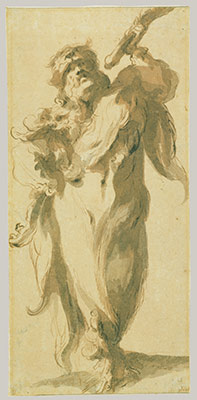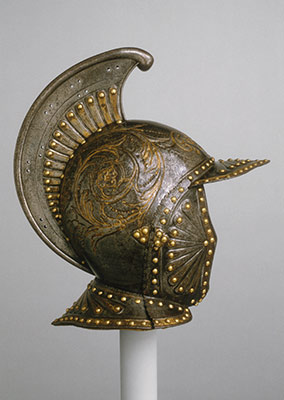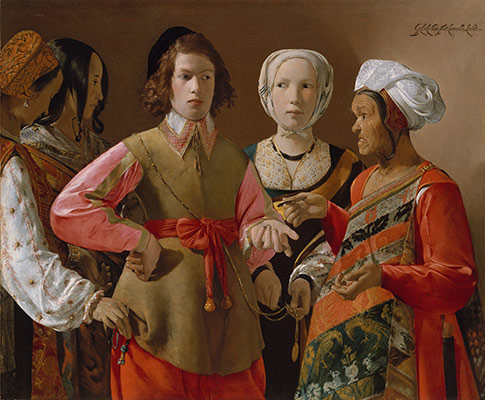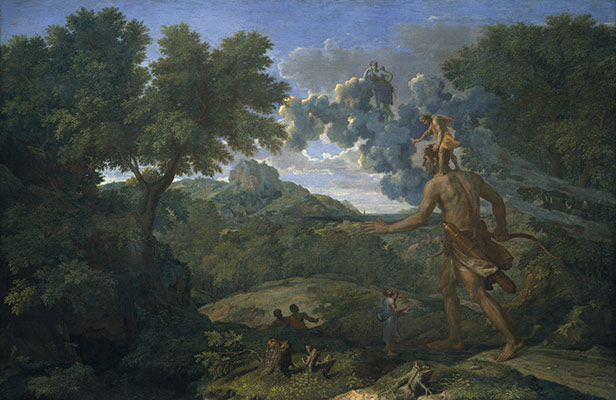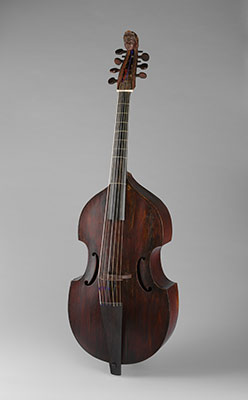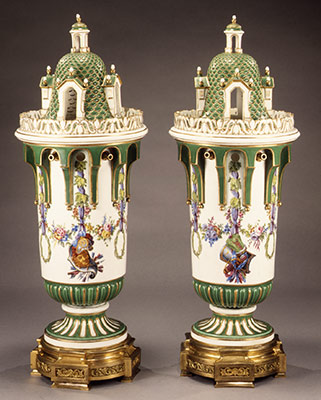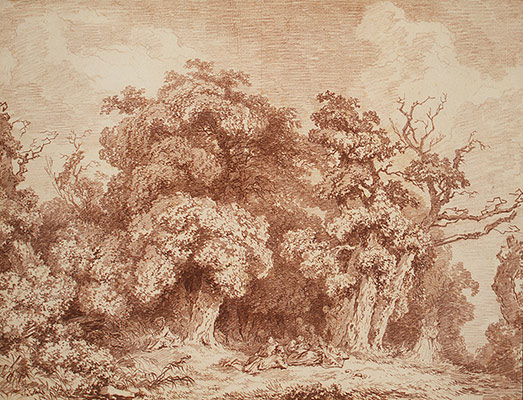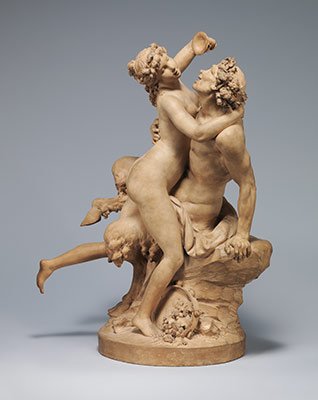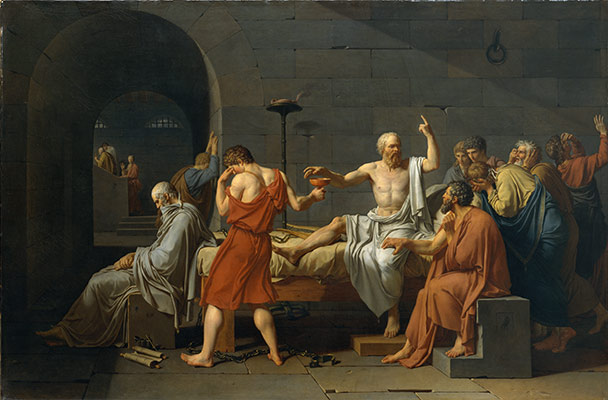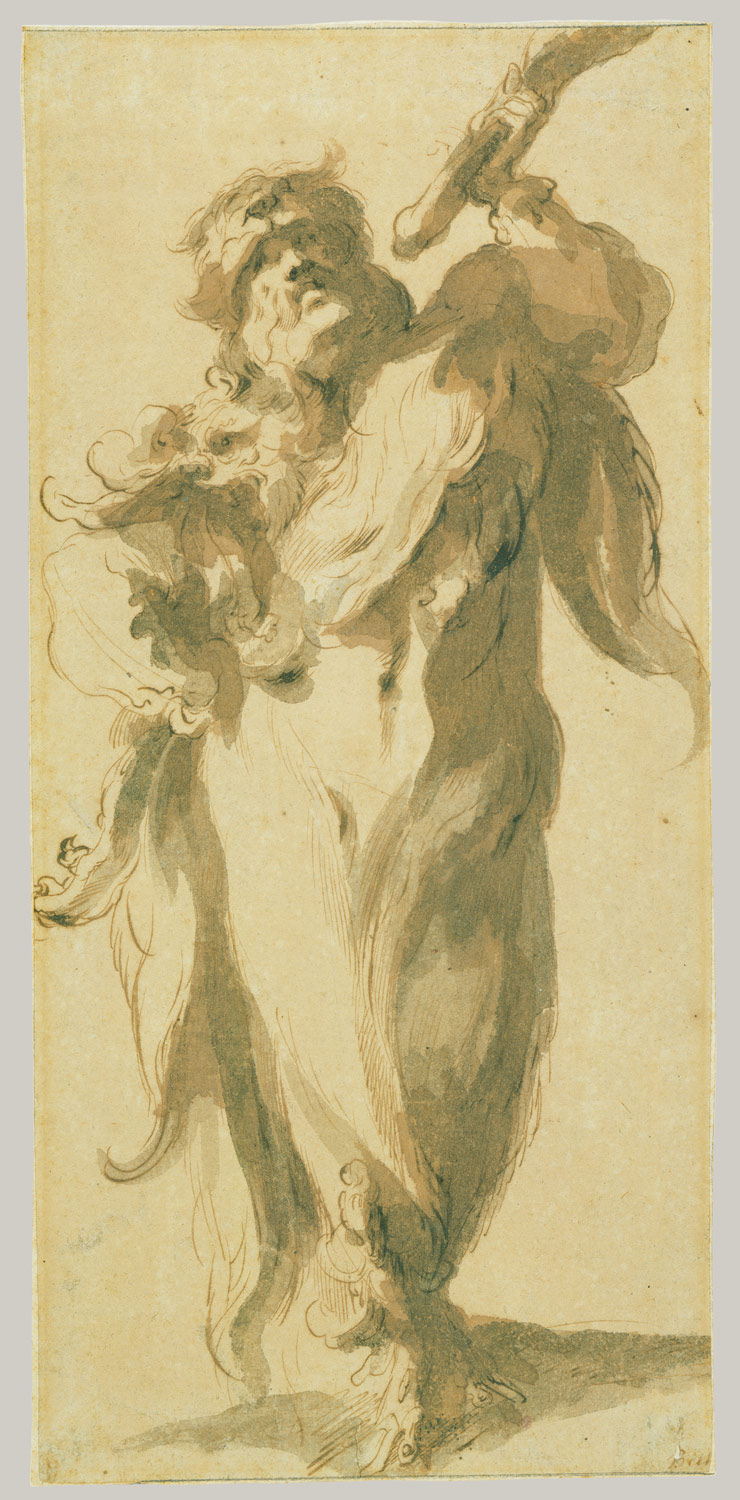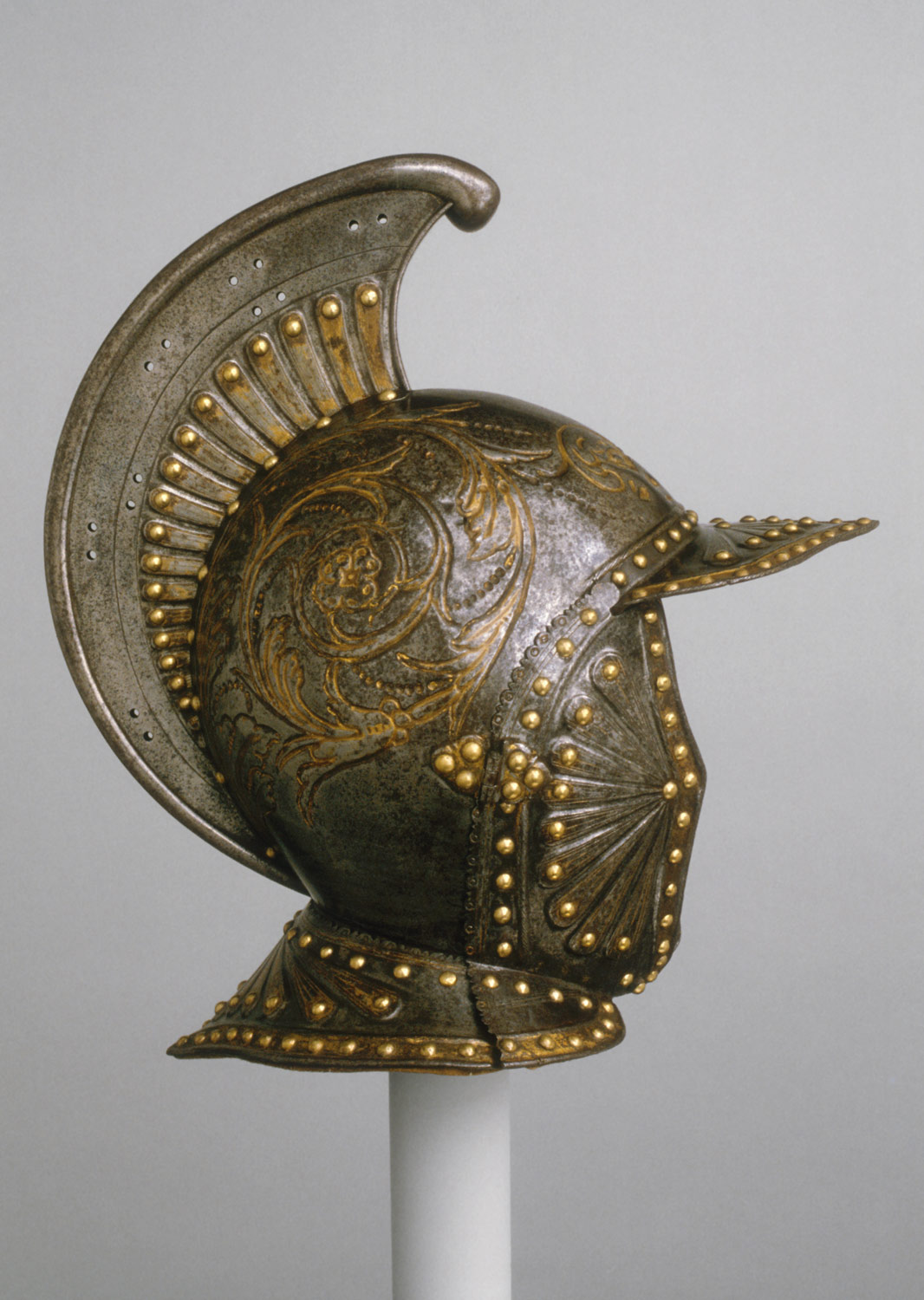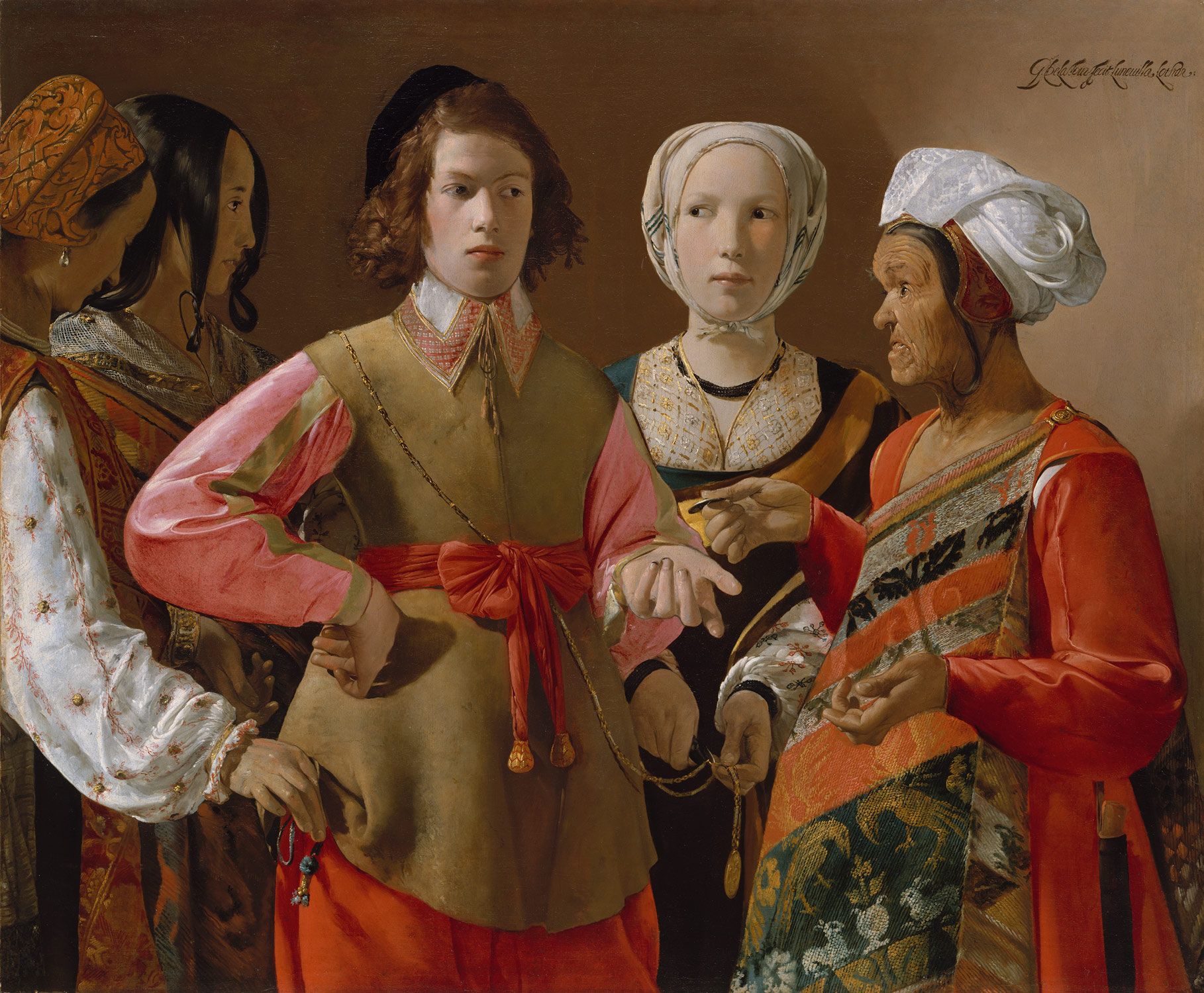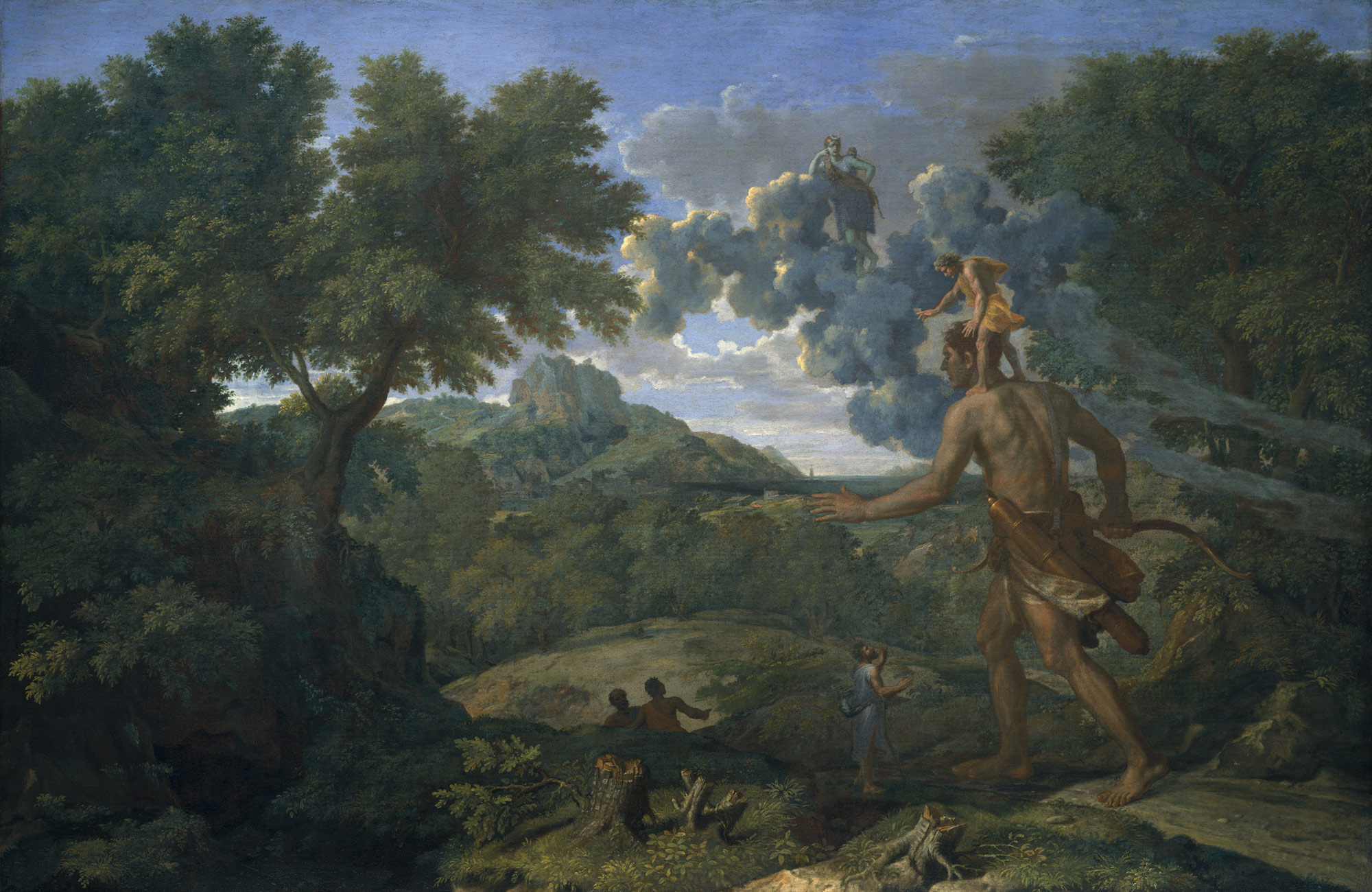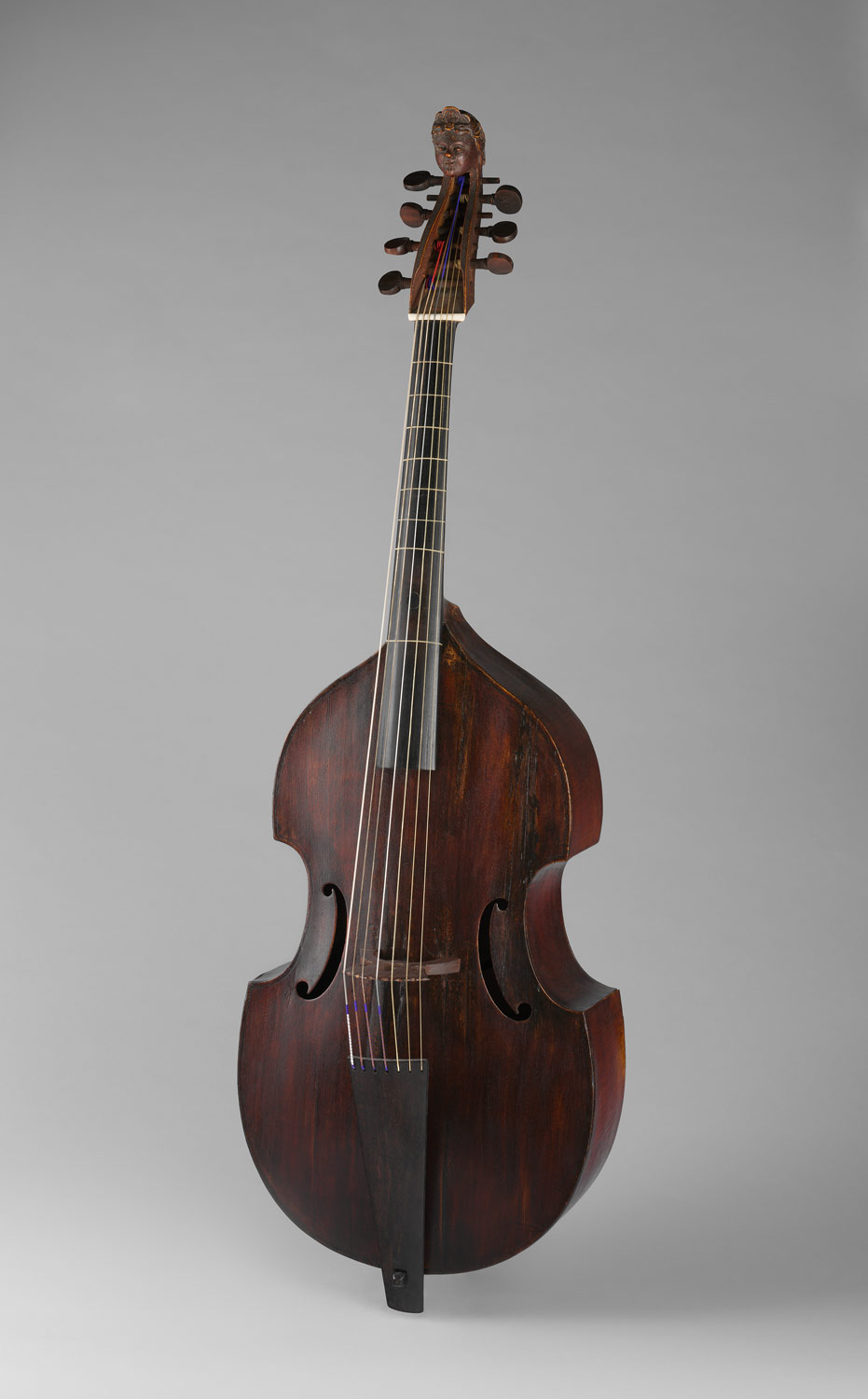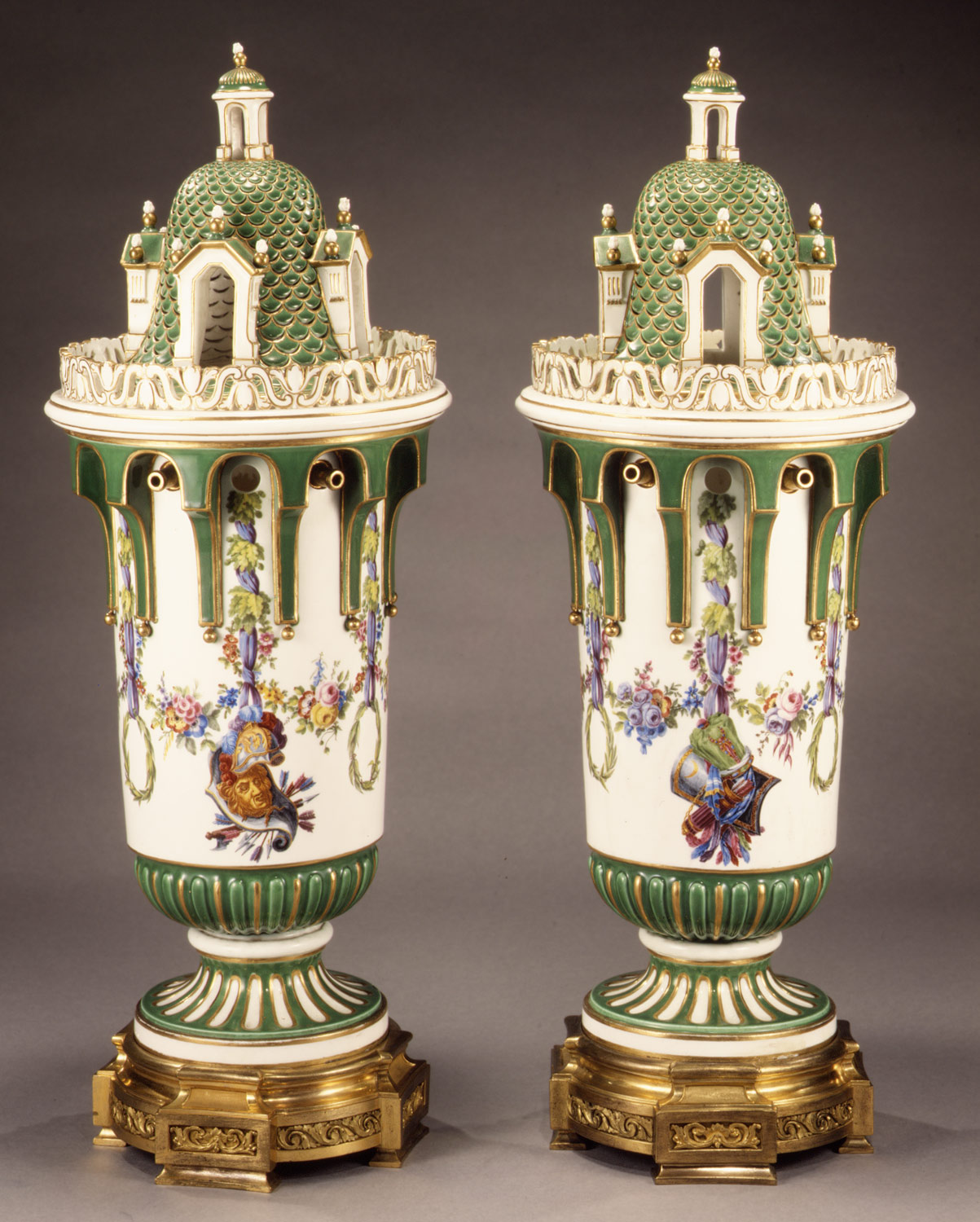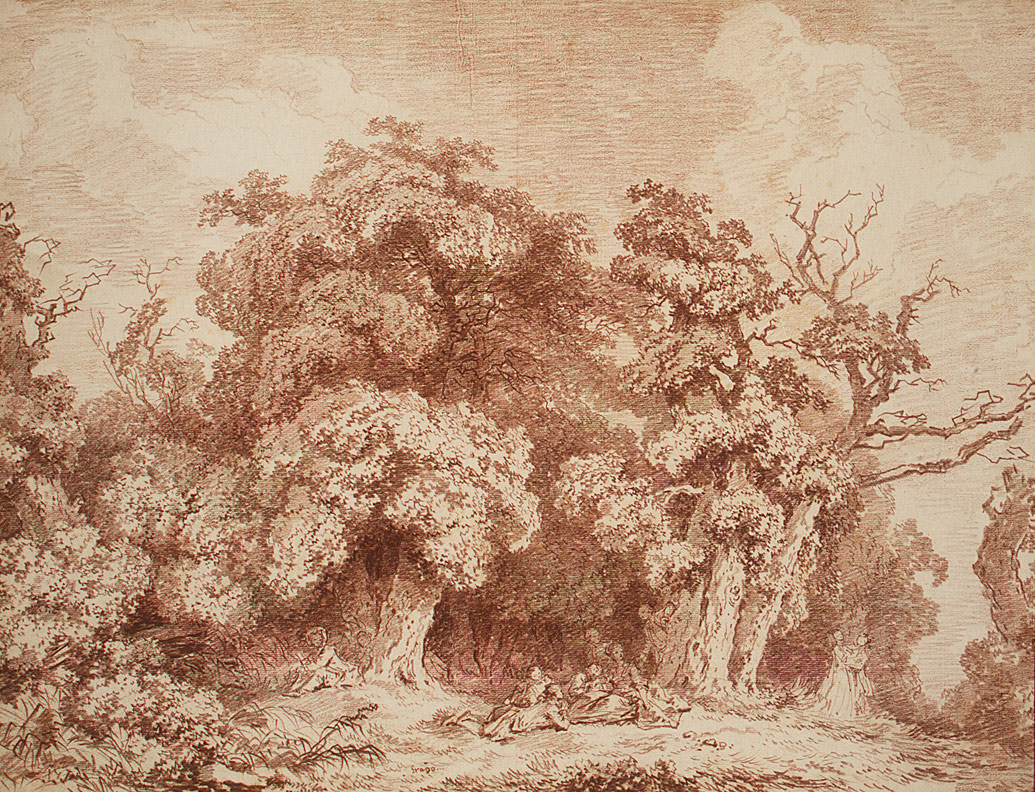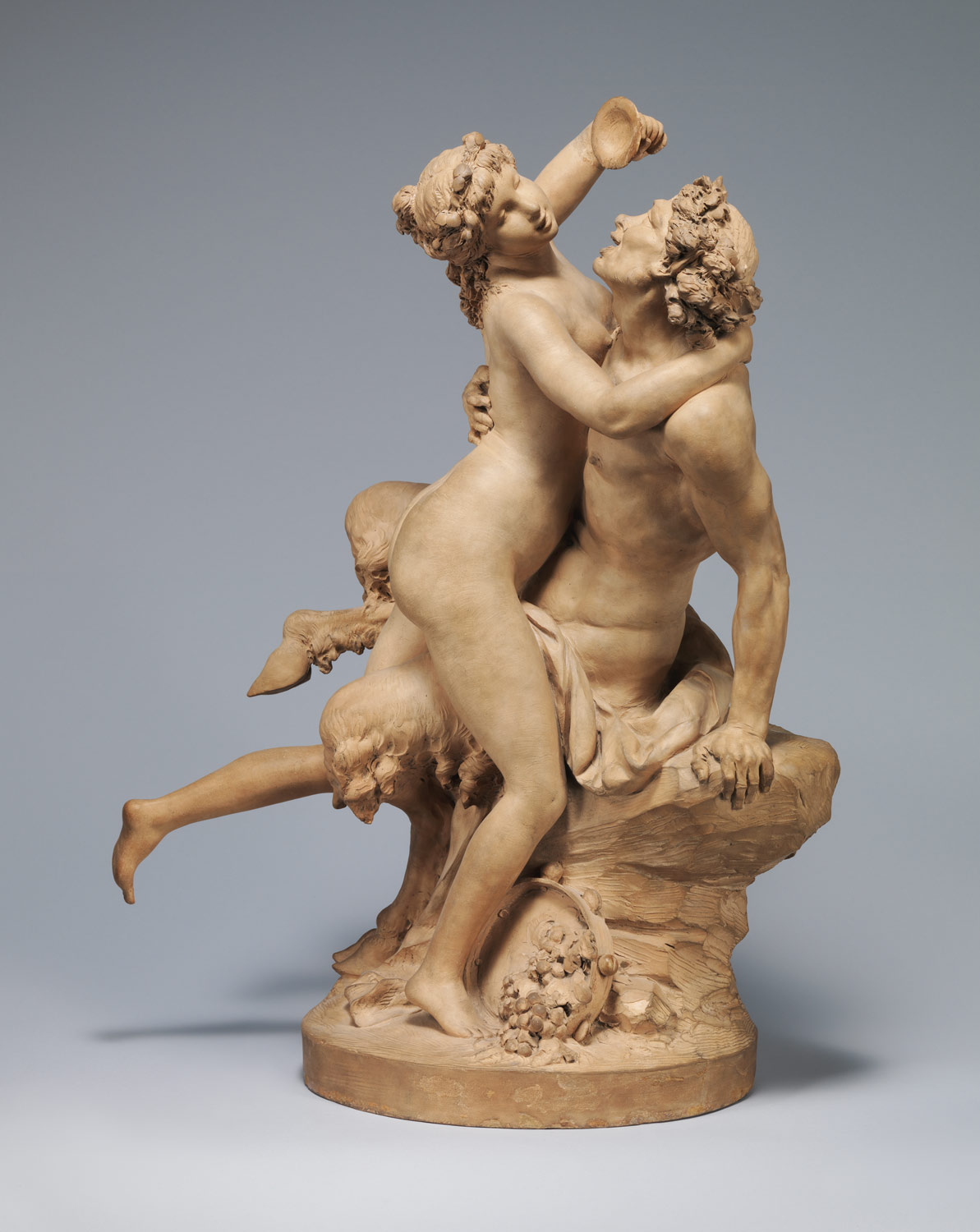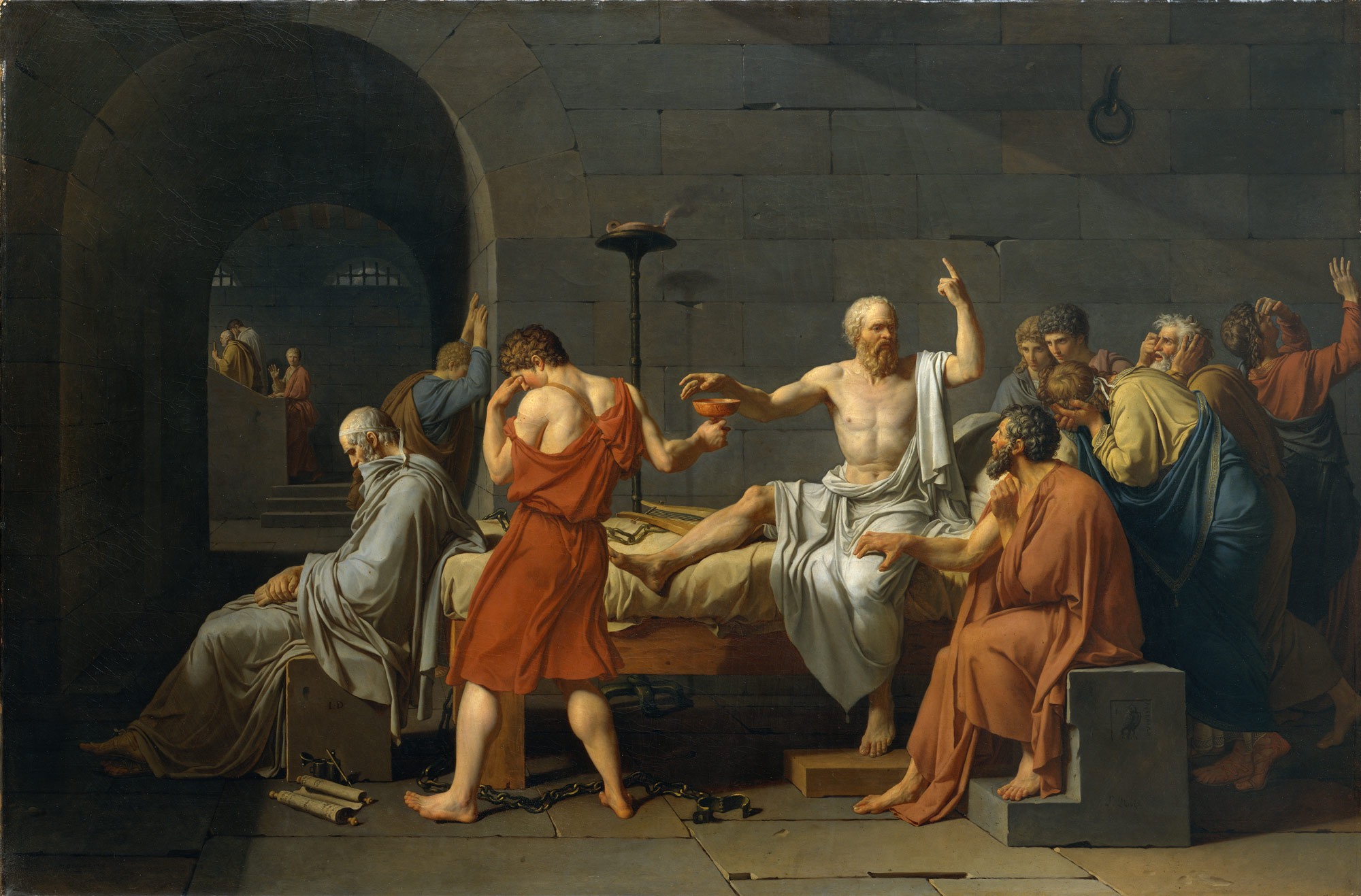France emerges during this period as a major world power and a cultural center to rival Rome, fountainhead of the Baroque style. This is largely due to the absolutist aims of the French monarchs, particularly Louis XIV, who, with a retinue of architects, painters, and sculptors, fashions a court of peerless splendor. The high Baroque style from Rome is slower to arrive in France than elsewhere in Europe, as a strict classicism prevails for much of the seventeenth century. In the latter half of the period, France is the seat of the Enlightenment, a major intellectual movement that asserts the power of reason and mobilizes a widespread dissatisfaction with contemporary social and political ills that results, later in the century, in revolution. With the Enlightenment comes a renewed veneration of antiquity and a Neoclassical movement in the arts; this gives way, at the end of the period, to Romanticism.
France, 1600–1800 A.D.
Timeline
1600 A.D.
1650 A.D.
1650 A.D.
1700 A.D.
1700 A.D.
1750 A.D.
1750 A.D.
1800 A.D.
Overview
Key Events
-
1620s
Peter Paul Rubens (1577–1640), a Flemish master whose international renown stretches from Northern Europe and his native Antwerp to Southern Europe and the Italian peninsula, is active at the French court. There he paints a monumental cycle of allegorical scenes from the life of Marie de’ Medici for the Luxembourg Palace (now Musée du Louvre, Paris). A companion cycle of scenes from the life of Henry IV is planned but never completed; six of these canvases are in the artist’s studio at his death. (An oil sketch for The Triumph of Henry IV is in the Metropolitan Museum; 42.187.) The far-reaching influence of Rubens is felt by the late seventeenth century and extends well into the eighteenth.
-
1622
Armand Jean du Plessis (1585–1642), duc de Richelieu, a cleric in the service of Marie de’ Medici, is granted a cardinalate. Thereafter the Cardinal Richelieu rises steadily in power, and as his influence as a public figure increases, so too does his ambition as a patron. In his professional capacities, Richelieu is involved in many royal projects, including the decoration of the Palais du Luxembourg and the summoning of Italian artists to France. He funds numerous projects of his own as well; of particular note is the renovation of buildings at the Sorbonne from the late 1620s into the 1640s. Richelieu amasses a great personal collection, including masterworks from antiquity through his own time (see Caravaggio’s Musicians, 52.81).
-
1622–41
Sébastien Stoskopff (1597–1657), a painter from the city of Strasbourg, resides in Paris. Among the first great still-life painters working in France, Stoskopff’s virtuosity lies in his ability to render the texture and surface luster of shells, glass, and metal objects with meticulous detail and finish. He paints the Still Life with a Nautilus, Panther Shell, and Chip-Wood Box (2002.68) during his stay in Paris, about 1630.
-
1627
Simon Vouet (1590–1649), a painter active at the time in Rome, is called to court by Louis XIII and later made his chief painter. While he is among the first artists to introduce elements of the Italian Baroque into French painting, the Caravaggesque style he practices in Rome soon gives way to a sensuous, decorative approach that points toward the Rococo. Vouet is briefly displaced in the king’s favor by Poussin; the rivalry thus established between the two painters mirrors that which occurs between the conflicting styles—decorative and classicizing, respectively—that they espouse.
-
by 1629
The Le Nain family of painters—Antoine (1588?–1648), Louis (1593?–1648), and Mathieu (1607–1677)—are active in Paris. While the brothers often collaborate, each excels in a different aspect of painting. Antoine is a skilled miniaturist, Mathieu a portraitist, and Louis conceives of genre scenes such as the Peasant Family (Louvre) that imbue their subjects, often treated humorously or satirically by other contemporary artists, with a classicizing dignity.
-
1633
Graphic artist and native of Nancy, Jacques Callot (1592–1635) produces Great Miseries of War, two print series depicting the carnage and suffering he witnesses during the Thirty Years’ War. Of less emotional intensity but lacking none of the immediacy of this series are works he produces between 1612 and 1621 for the Medici in Florence. Callot’s directness and descriptive abilities over a wide range of subject matter—from witty depictions of court festivals and scenes from the Italian commedia dell’arte to frank and often moralizing portrayals of human brutality—influence many Northern artists, including La Tour, Watteau, and Rembrandt.
-
1639
Georges de La Tour (1593–1652) is named painter to the king. Active in his native Lorraine, La Tour is among the finest Northern artists working in a Caravaggesque style. The Fortune Teller (60.30) and The Penitent Magdalen (1978.517) reflect the influence of Caravaggio in both their genre subjects and their technique of lighting, with a strong contrast of illumination and shadow. These characteristics combine with simple geometry of form and a meditative mood in the pictures for which he is chiefly known, including several compositions of the Magdalen and a canvas of Joseph the Carpenter (Louvre).
-
1640
Louis XIII summons Nicolas Poussin (1594–1665) to Paris as his principal painter. Between 1624 and 1640, Poussin is active in Italy; he first travels to Venice and is influenced by the poetic mythological subjects and warm palette of Titian, and later settles in Rome. There, inspired by Raphael and works of classical antiquity, he develops a style of painting that aims through subject matter, clarity of composition, and precision of gesture and detail to convey the nobility of human actions. Dissatisfied with French court life, he returns to Italy by 1643; his work nevertheless sets the tone for a classicism that prevails in French art throughout the century.
-
1643
The five-year-old Louis XIV (1638–1715) succeeds his father as king of France, with his mother, Anne of Austria, serving as regent. Cardinal Jules Mazarin (1602–1661), Anne’s advisor and successor of the late king’s chief minister, Cardinal Richelieu, helps to centralize the power of the monarch. He does this mostly through astute diplomacy, as earlier schemes of taxation stir waves of unrest that culminate in a series of uprisings known as the Fronde (1648–53). Louis assumes leadership at Mazarin’s death; by this time, the road is well paved for the absolutism associated with his reign, exemplified by a statement attributed to the king: “L’état, c’est moi” (“I am the state”). With his chief advisor Jean-Baptiste Colbert (1619–1683), he devises elaborate systems of domestic government and court policy designed to exert complete control over his subjects and curtail the power of the nobility. Architecture and the visual arts play a vital role in this plan, as a classicizing style is made “official” and large-scale artistic endeavors have as their sole aim the glorification of the monarch and the preservation of his fame. In 1662, the artist Charles Le Brun (1619–1690) becomes chief painter to the king, but wields even greater power than the title implies. Le Brun, acting as supervisor of all royal artistic projects, overseeing the construction and decoration of the palace at Versailles, and directing the Gobelins workshops and the Royal Academy (founded 1648), virtually controls the artistic output of the country for nearly three decades.
-
mid-17th century
François Mansart (1598–1666) is one of the most influential architects of his day, particularly for château (country house) and hôtel (townhouse) design. The Château de Maisons (1642–50) near Paris exemplifies Mansart’s masterful application of classical form to Baroque structures.
-
1648
The Académie Royale de Peinture et de Sculpture is founded in Paris. In 1663, Charles Le Brun becomes its director, and imposes a strict curriculum of practical and theoretical studies based on the classical style deemed appropriate by the monarch and by Le Brun himself. The Académie establishes history (narrative) painting as the highest of art forms and praises the painters of antiquity, also Raphael—and, among contemporaries, Poussin—as the greatest artists, but regards as inferior still-life painting, the Venetian colorists, and those inspired by them, including Rubens. A rivalry between Poussinistes—those who assert the superiority of drawing—and Rubénistes—who maintain the importance of color—extends into the next century.
-
1656–61
Architect Louis Le Vau (1612–1670) and painter/designer Charles Le Brun build the château of Vaux-le-Vicomte for Louis XIV’s superintendent of finances Nicolas Fouquet (1615–1680). André Le Nôtre (1613–1700) provides designs for the gardens, his earliest masterworks. The harmony of style among the three collaborators earns the admiration and envy of Louis, who visits the château in the year of its completion, weeks before Fouquet’s arrest and banishment for draining the treasury for personal profit. The king shortly thereafter appoints the three men to posts at court.
-
1662
Louis XIV purchases the Gobelins workshops in Paris, where his minister Colbert gathers artisans to create tapestries and furniture for the king’s palaces. Charles Le Brun serves as director and chief designer from 1663 until his death.
-
1664
A competition is begun for a design to complete the Louvre. Rebuilding and expansion of the medieval palace has been in progress, with interruptions, since the reign of Francis I. Henry IV (r. 1589–1610) chooses the Louvre as his residence, and numerous projects for its enlargement, including the construction of the Grande Galerie du Bord de l’Eau, which joins the Louvre to the Palais des Tuileries, are conceived during his rule. In 1665, the great Roman Baroque master Gian Lorenzo Bernini (1598–1680) comes to Paris and submits several designs for the palace’s remaining structural component: an eastern facade. Louis XIV rejects these designs and entrusts the project to Louis Le Vau, Charles Le Brun, and Claude Perrault (1613–1688) (53.600.1191). Completed in 1670, the eastern facade is a triumph of French classicism, with its grand colonnade and center pavilion that recall ancient Roman temple architecture.
-
1666
A branch of the Académie is founded in Rome; eight years later the Prix de Rome is established, awarding a period of study in Rome to gifted painters, sculptors, and (after 1720) architects. These institutions stress the importance of a firm grounding in the classical tradition so integral to the Académie’s curriculum and crucial to French art of the period.
-
1669
Louis XIV orders the construction of a royal palace at Versailles, a small town outside of Paris. Work begins under Louis Le Vau, designer of the Garden Front; Le Vau dies in the following year, and Jules Hardouin Mansart (1646–1708) takes over the project. The interior is dominated by the great Galerie des Glaces (Hall of Mirrors) flanked by the Salon de la Guerre (War) and Salon de la Paix (Peace). The lavish decorative program, executed by Le Brun with stucco reliefs by Antoine Coyzevox (1640–1720), a sculptor with a particular gift for portraiture, reflects Baroque ideals. Equally lavish are the garden designs of André Le Nôtre. Louis moves to Versailles with his court in 1682; removed from the cultural hub of Paris, members of the aristocracy live under the watchful eye of the king, who dictates rules of behavior and fashion that keep the wealth and authority of the nobles in check.
-
1680–91
Jules Hardouin Mansart constructs the Church of the Invalides in Paris; it adjoins the Hôtel des Invalides (1671–76), a veterans’ hospital built by Libéral Bruant. Influenced in some aspects by Italian Renaissance structures—particularly in its Greek cross plan, which recalls Michelangelo’s plan for Saint Peter’s in Rome—the church, with a massive, dramatic facade and tall dome, is chiefly an interpretation of the Roman Baroque. Mansart’s town-planning projects include the Place des Victoires (1684–86) and the Place Vendôme of 1699, the year in which he is named chief architect for royal buildings.
-
1682
Pierre Puget (1620–1694) completes his masterpiece, the larger-than-lifesize sculpture Milo of Crotona. This marble group depicts, possibly as a warning against pride, the boastful hero of myth being attacked by a lion. The great tension created by a strong diagonal composition of the figure’s limbs and garment drapery, as well as a graphic depiction of physical anguish, embody a Baroque sensibility, greatly influenced by the sculptor’s years of study in Italy. The moralizing classical theme undoubtedly appeals to Louis XIV, who accepts the sculpture for display at Versailles (now in the Louvre) and retains Puget in his employ. This happens in concurrence with the death of the statesman Colbert, who in the previous decade criticized the “heated” imagination of Puget, then active in Toulon; it is largely due to opposition from strict classicists such as Colbert that Puget achieves success at court only in the later years of his career.
-
1699–1700
The earliest surviving Parisian silver teapot, now in the Museum’s collection (48.187.78), is made. The introduction of tea and coffee into France in the seventeenth century provided an important impetus for the development of new forms in silver. French silver set the artistic standard for court silver throughout Europe, and the Swedes were especially influenced by French designs; it is recorded that a drawing of a teapot very similar to this one was sent to Sweden in 1702.
-
1712
Painter Jean Antoine Watteau (1684–1721) is admitted to the Académie Royale. His reception piece, The Pilgrimage to the Isle of Cythera (submitted 1717), is a scene in which delicately rendered figures amble and repose in an idyllic landscape. Because this type of composition, characteristic of Watteau’s oeuvre, is unprecedented at the Académie, a new category—the fête galante, literally an “elegant party”—is created expressly for his admission. Watteau also frequently depicts characters from the Italian theater, the commedia dell’arte, in similarly pastoral settings; Mezzetin (34.138) is one such example. Inspired by Rubens’s colorism and sixteenth-century Venetian painting in compositions that are by turns playful and wistful, Watteau’s works embody a refined fragility that make him a major proponent of Rococo style. Watteau is also a skilled draftsman who uses the technique of drawing in black, red, and white chalks—known as trois crayons—to effectively render the nuances of human form and flesh. His acceptance by the Académie illustrates the shift away from a rigid classical style that occurs after the death of Le Brun.
-
1715
At his great-grandfather’s death, Louis XV (1710–1774) is king of France. Philippe II, duc d’Orléans, serves as regent until his death in 1723; from 1726 until 1743, the monarch is aided by André Hercule de Fleury. Lacking in the absolutist preoccupations of his predecessor as well as the finances to sustain them, Louis is a weak leader and easily influenced by favorites, who attain considerable power at court. Chief among them are his mistresses, Madame de Pompadour(1721–1764) and her successor, the comtesse du Barry (1743–1793). During Louis’s reign, the grand drama of the Baroque gives way to a highly ornate but intimate style of great delicacy and refinement known as Rococo (from coquillage and rocaille, which refers to decoration with irregularly shaped stones and shells). This period marks a golden age of French furniture and decorative arts, as architects, designers, and artisans work together to create interior spaces of such splendor and sophistication that the line between function and ornament is blurred. Nicolas Pineau’s (1684–1754) room of about 1735 from the Hôtel de Varengeville, Paris, is one such example of this style.
-
1728
Jean-Baptiste-Siméon Chardin (1699–1779) is accepted into the Académie as a “painter skilled in animals and fruits.” In contrast to the narrative, often historical subjects chosen by his most illustrious contemporaries, Chardin paints still lifes and interiors that are themselves pervaded by a sense of great stillness. His Silver Tureen (59.9) dates from this year.
-
1731
François Boucher (1703–1770) returns to Paris after a three-year stay in Italy, where he studies the works of Baroque masters as well as Italian and Dutch landscapists and Venetianvedute. He is soon received by the Académie Royale (1734) and numbers among his patrons King Louis XV (r. 1715–74) and Madame de Pompadour, the king’s mistress (see 20.155.9; 49.7.46). Boucher’s paintings—with their bright palette and sentimental or erotic themes—as well as his prolific designs for furniture, tapestry, and other decorative objects, exemplify the spirit of the Rococo.
-
1732
Jean Marc Nattier (1685–1766) paints Mlle de Lambesc as Minerva with the Comte de Brionne (Louvre); the idealized, mythologizing portrait type secures for Nattier great popularity at court and remains fashionable until late in his career.
-
1737
The Salon, an annual exhibition of paintings selected by a jury of artists from the Académie, is permanently established; it is held at the Salon Carré of the Louvre.
-
1745
Louis XV allows the pottery at Vincennes to manufacture porcelain bearing the royal fleur-de-lis emblem; pleased with its output, he later moves the factory to Sèvres (1756), near the château of Madame de Pompadour. The workshops at Sèvres produce costly objects such as small sculptural figures, tableware, vases, clocks, and plaques with brilliant ground colors, delicate enamels, and gold borders and scrollwork.
-
mid-18th century
The Enlightenment flourishes in France. This movement, centered in Paris, asserts the importance of human reason as well as the existence of natural law, and is promulgated by writers, scientists, philosophers, and theorists such as Jean-Jacques Rousseau (1712–1778), Voltaire (1694–1778), baron de Montesquieu (1689–1755), and Denis Diderot (1713–1784). Inspired by this flowering of rationalism and order, the focus of the arts turns from the florid Rococo toward a greater simplicity and morality. At the same time, the discovery of the ruins of the ancient cities Herculaneum (1709) and Pompeii (1748) renews interest in the classical world, and revolutions in France and America later in the century invite comparisons between ancient and modern government. These factors combine to advance the Neoclassical movement in the visual arts and architecture.
-
1753–76
Jean-Baptiste Pigalle (1714–1785) executes a monumental tomb for the Maréchal de Saxe (Church of Saint Thomas, Strasbourg). The allegorical sculptural group depicts the Maréchal stepping into an open sarcophagus, while a female figure representing France attempts to restrain him and looks imploringly to the shrouded figure of Death. A mourning Hercules is depicted at left, along with animals symbolizing the Maréchal’s vanquished foes. The figures are classical in pose and gesture, but the theatricality of the monument looks back to the Baroque. One of the most gifted sculptors of his time, Pigalle excels at sculpture on both grand and intimate scales.
-
1755
Jacques-Germain Soufflot (1713–1780) undertakes the design for the Church of Sainte-Geneviève in Paris. Soufflot’s aim is to construct a church reflecting his interests in both classical Roman architecture and the elegance of Gothic church design, but he is plagued by opposition from contemporary critics and the design undergoes several revisions. The church—an early monument of the Neoclassical movement—is completed over a decade after his death, and in 1791 is secularized as the Panthéon des Grands Hommes.
-
1761
Returning to France after five years of study at the French Academy in Rome, Jean Honoré Fragonard (1732–1806) quickly establishes in Paris a clientele for cabinet pictures that bear the influence of both Italian Baroque painting and Dutch landscapes. Fragonard works in a fluid, painterly style that recalls—with rapid brushwork and a warm palette—the oil sketches of Rubens. He achieves great success with private collectors as well as more official patrons, and is commissioned by the comtesse du Barry to produce a series of panels for her château at Louveciennes (now Frick Collection, New York). Du Barry rejects the completed panels, and Fragonard departs for Italy, eventually slipping from favor as the Neoclassical style flourishes.
-
1761
Jean-Baptiste Greuze (1725–1805) paints The Village Bride (Louvre), one of many moralizing and often melodramatic genre scenes that, opposed to the whimsy of the Rococo, earn him the praise of Enlightenment supporters, particularly Diderot. Greuze often refers symbolically in his paintings to the theme of compromised virtue or lost innocence, as in Broken Eggs(20.155.8).
-
1768
Jean Antoine Houdon (1741–1828) returns to Paris from training in Rome and is soon established as the foremost sculptor in France. In his portrait busts, his two great preoccupations—study from nature and the antique—combine to lifelike and vibrant effect. At the Salon of 1779, Houdon exhibits a series of portrait busts of such famous men as Voltaire (1972.61), Rousseau (08.89.2a), George Washington (14.58.235), and Benjamin Franklin (72.6). At the same Salon, his gifted contemporary Augustin Pajou (1730–1809) exhibits a portrait bust of Louis XVI in armor (now Versailles). The success of Houdon and Pajou comes with the spread of the Enlightenment, which seeks to preserve and venerate those figures of public life who contribute to the intellectual and philosophical advancement of the age
-
1779
Élisabeth Louise Vigée-Lebrun (1755–1842), a young portraitist trained by her father, is summoned to Versailles and the employ of the queen, Marie Antoinette. Forced for political reasons to flee at the outbreak of the Revolution in 1789, Vigée-Lebrun travels to Italy, Vienna, Berlin, Saint Petersburg, Dresden, and London. Her technical virtuosity, as well as the sensitivity and elegance of her likenesses, meet with international acclaim. A painting by Marie Victoire Lemoine (1754–1820) (57.103) may provide a view of Vigée-Lebrun’s atelier.
-
1783
Jean-Henri Riesener (1734–1806), one of the most gifted and successful cabinet makers of the second half of the eighteenth century, produces a fall-front secretary (secrétaire à abattant) (20.155.11), matching commode, and encoignure (corner cabinet) for Queen Marie Antoinette’s cabinet intérieur at Versailles. The exquisite secretary, with its Japanese black and gold lacquer paneling and gilt bronze mounts, is a masterwork of eighteenth century cabinet design. Reisner is a favorite of the Queen, for whom he also produces a mechanical table (1778) now in the Museum’s collection (33.12). Another favorite of the queen, Georges Jacob (1739–1814), supplies his patroness and other members of the French royal family with elegant sets of seat furniture, including (1784) a pair of side chairs (1977.102.13,14) for Marie Antoinette’s boudoir at the Tuileries palace.
-
late 18th century
Pigalle’s student, Claude Michel (1738–1814), known as Clodion, produces the Nymph and Satyr Carousing (14.40.687). Although its antique theme is characteristic of the Neoclassical period, the terracotta sculptural group nevertheless exemplifies a Rococo ideal in its small scale and swirling forms engaged in amorous abandonment. Clodion executes a number of large-scale commissions during his successful career, but his fame rests upon small groups, often with Bacchic themes, such as this one.
-
1784
Étienne-Louis Boullée (1728–1799) designs a monument to Isaac Newton (ink and wash drawing, Bibliothèque Nationale, Paris). The massive, hollow sphere pierced at the top by small holes in imitation of starlight is never realized, but its plan illustrates the visionary nature of a theorist who devotes his career to promoting purity in architectural form.
-
1787
Jacques Louis David (1748–1825) paints The Death of Socrates (31.45). This painting depicts the ancient philosopher about to drink a cup of hemlock, enacting the death sentence for refusing to renounce his beliefs. In its heroic subject matter and clarity of execution, it is a supreme Neoclassical statement from the foremost painter of the period. David is forced into exile during the Revolution but returns during the reign of Napoleon.
-
1789
The French Revolution begins, instigated by numerous factors, including the country’s unstable finances (worsened by participation in the American Revolution and war with Austria from 1792) and the mounting dissatisfaction of peasants, whose heavy taxes are used to pay the debts accrued by a court known for its decadence and splendor. The philosophical developments of the Enlightenment, particularly the belief in the authority of the individual, also stir unrest as social and economic reforms fail to keep pace with intellectual progress. By 1792, the Revolutionary legislature abolishes the monarchy and the king is executed for treason in 1793; a provisional government, led by Maximilien Robespierre, is established in the same year. Known as the Reign of Terror, the period of Robespierre’s leadership—or dictatorship—is marked by uprising and massacre from which no individual suspected of antirevolutionary activity is exempt. Robespierre is arrested and guillotined in 1794, and a new legislature, called the Directory, is established. Five years later, general Napoleon I (1769–1821) returns from a campaign of the French Revolutionary Wars, overthrows the Directory, and rules France as emperor from 1804 until 1814.
Citation
“France, 1600–1800 A.D.” In Heilbrunn Timeline of Art History. New York: The Metropolitan Museum of Art, 2000–. http://www.metmuseum.org/toah/ht/?period=09®ion=euwf (October 2003)
Related
Map

